Wikipedia logo
The logo of Wikipedia is an unfinished globe constructed from jigsaw pieces—some pieces are missing at the top—inscribed with glyphs from many different writing systems. As displayed on the web pages of the English-language version of Wikipedia, there is a wordmark "WIKIPEDIA" under the globe, and below that the text "The Free Encyclopedia" in the free open-source Linux Libertine font.[1][2]

Puzzle-globe design

Each piece bears a glyph (a letter or other character), or glyphs, symbolizing the multilingualism of Wikipedia. As with the Latin letter "W", these glyphs are in most cases the first glyph or glyphs of the name "Wikipedia" rendered in that language. They are as follows:[3]
- At left, from the top down, are Armenian ⟨Վ⟩ v, Cambodian ⟨វិ⟩ vĕ (lying on its side), Bengali ⟨উ⟩ U, Devanagari वि vi, and Georgian ⟨ვ⟩ v.
- In the middle-left column is Greek ⟨Ω⟩ ō, and below that are Chinese ⟨維⟩ wéi,[4] Kannada ⟨ವಿ⟩ vi, and (barely visible at the bottom) Tibetan ⟨ཝི⟩ wi.
- In the middle-right column is Latin ⟨W⟩. Above that is Japanese ⟨ウィ⟩ wi; below it are Cyrillic ⟨И⟩ i, Hebrew ⟨ו⟩ v, and (barely visible at the bottom) Tamil ⟨வி⟩ vi.
- The rightmost column is Ethiopic ⟨ው⟩ wə, Arabic ⟨و⟩ w, Korean ⟨위⟩ wi, and Thai ⟨วิ⟩ wi.
The top edge line of the વિ puzzle piece on the rear side of the ball (as seen the 2D character map) crosses through the inwards indentation of the ウィ puzzle piece when viewed from the default front perspective.
The empty space at the top represents the incomplete nature of the project, the articles and languages yet to be added.
History


The design of "WIKIPEDIA" text beneath a globe, with the interlocking-V W and large A, was designed by Wikipedia user The Cunctator for a November 2001 logo contest.[5] An initial design of the puzzle-globe logo was created by Paul Stansifer, a then 17-year-old Wikipedia user, whose entry won a design competition run by the site in 2003. Another Wikipedia user, David Friedland, subsequently improved the logo by changing the styling of the jigsaw pieces so that their boundaries seemed indented and simplified their contents to be a single glyph per piece, rather than a jumble of nonsense multilingual text.[6] In the process, some errors were introduced.[6] In particular, one piece of Devanagari script, and one piece of Japanese katakana were incorrectly rendered.[7] Also, the Chinese character (袓) has no immediate connection with Wikipedia.
Current logo

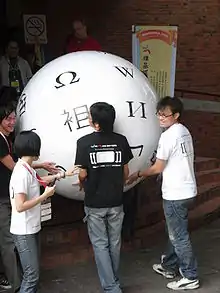
In 2007, a modified 3D model was developed by Wikimedia Taiwan for Wikimania, when they distributed a 3-inch diameter spherical puzzle based on the logo, that attendees could piece together. It did not add other glyphs on the parts that cannot be seen on the 2D logo, but used that space to include small logos of the sister projects and information about Wikimania. A variant of that model was used to build a person-sized Wikiball that spun on a stand, featured during the event.[8] This led to a renewed interest in getting a proper 3D model for the logo.

By 2007, users on listservs discovered that the logo had some minor errors. The errors were not immediately fixed, because, according to Friedland, he could not locate the original project file. Friedland added that "I have tried to reconstruct it, but it never looks right" and that the logo "should be redrawn by a professional illustrator."[6] Kizu Naoko (木津 尚子), a Wikipedian, said that most Japanese users supported correcting the errors. In an e-mail to Noam Cohen of The New York Times, Kizu said that "It could be an option to leave them as they are. Most people don't take it serious [sic] and think the graphical logo is a sort of pot-au-feu of various letters without meaning."[6]
In late 2009, the Wikimedia Foundation undertook to fix the errors and generally update the puzzle globe logo. Among other concerns, the original logo did not scale well and some letters appeared distorted.[9] For the new logo, the Wikimedia Foundation defined which characters appear on the "hidden" puzzle pieces, and had a three-dimensional computer model of the globe created to allow the generation of other views.[10] A partial 3D globe was commissioned for the Wikimedia office.[11]
The logo was rolled out on the projects in May 2010. It features the new 3D rendering of the puzzle globe, with corrected characters (and the Klingon character replaced by a Ge'ez character). The wordmark has been modified from the Hoefler Text font to the open-source Linux Libertine font, and the subtitle is no longer italicized. The "W" character, which was used in various other places in Wikipedia (such as the favicon) and was a "distinctive part of the Wikipedia brand", was stylized as crossed V's in the original logo, ⟨W⟩, while the W in Linux Libertine is rendered with a single line. To provide the traditional appearance of the Wikipedia "W", a "crossed" W was added as an OpenType variant to the Linux Libertine font.[1]
On October 24, 2014, the Wikimedia Foundation released the logo, along with all other logos belonging to the Foundation, under the Creative Commons Attribution-ShareAlike 3.0 license.[12]
On September 29, 2017, the logo of Wikipedia was submerged to the bottom of Armenia’s Lake Sevan thanks to the joint efforts of Wikimedia Armenia and ArmDiving divers’ club. The logo is an unfinished globe made of puzzle pieces with symbols (including Armenian "v" letter) from different sign systems written on them. The 2m wide, 2m high logo (the largest in the world) was made in Armenia for the annual meeting of the Central and Eastern Europe Wikimedia affiliates, Wikimedia CEE Meeting that the country hosted in August 2016 in Dilijan.[13]
Trademark
The (former) logo was registered as a European Community Trade Mark by Wikimedia Foundation, Inc. The trade mark bears a filing date of 31 January 2008 and a registration date of 20 January 2009.[14]
Logos
Historical logos
 2001 (tentative)
2001 (tentative) 2001–2003
2001–2003 Logo of French Wikipedia (2002–2003)
Logo of French Wikipedia (2002–2003).png.webp) Logo of Swedish Wikipedia (2003)
Logo of Swedish Wikipedia (2003) 2003–2010
2003–2010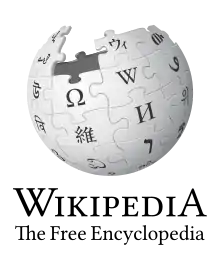 2010–present
2010–present
Anniversaries
 Tenth anniversary of Wikipedia (2011)
Tenth anniversary of Wikipedia (2011) Tenth anniversary of Wikipedia celebrated on Chinese edition. Traditional Chinese red variant (2011)
Tenth anniversary of Wikipedia celebrated on Chinese edition. Traditional Chinese red variant (2011) Tenth anniversary of Wikipedia celebrated on Chinese edition. Traditional Chinese black variant (2011)
Tenth anniversary of Wikipedia celebrated on Chinese edition. Traditional Chinese black variant (2011) Tenth anniversary of Wikipedia celebrated on Chinese edition. Traditional Chinese black corner variant (2011)
Tenth anniversary of Wikipedia celebrated on Chinese edition. Traditional Chinese black corner variant (2011) Tenth anniversary of Wikipedia celebrated on Chinese edition. Traditional Chinese orange variant (2011)
Tenth anniversary of Wikipedia celebrated on Chinese edition. Traditional Chinese orange variant (2011) Tenth anniversary of Wikipedia celebrated on Chinese edition. Simplified Chinese red variant (2011)
Tenth anniversary of Wikipedia celebrated on Chinese edition. Simplified Chinese red variant (2011) Tenth anniversary of Wikipedia celebrated on Chinese edition. Simplified Chinese black variant (2011)
Tenth anniversary of Wikipedia celebrated on Chinese edition. Simplified Chinese black variant (2011) Tenth anniversary of Polish Wikipedia (2011)
Tenth anniversary of Polish Wikipedia (2011) Tenth anniversary of Alemannic Wikipedia (2013)
Tenth anniversary of Alemannic Wikipedia (2013) 1st logo for twentieth anniversary of Wikipedia on English edition (2021)
1st logo for twentieth anniversary of Wikipedia on English edition (2021) 2nd logo for twentieth anniversary of Wikipedia on English edition (2021)
2nd logo for twentieth anniversary of Wikipedia on English edition (2021) Twentieth anniversary of Wikipedia on Chinese edition (2021)
Twentieth anniversary of Wikipedia on Chinese edition (2021)
Milestone commemorations
 20 000 articles on Arabic Wikipedia (2006)
20 000 articles on Arabic Wikipedia (2006) 10 000 articles on Vietnamese Wikipedia (2006)
10 000 articles on Vietnamese Wikipedia (2006) 30 000 articles on Arabic Wikipedia (2007)
30 000 articles on Arabic Wikipedia (2007) 50 000 articles on Arabic Wikipedia (2007)
50 000 articles on Arabic Wikipedia (2007) 150 000 articles on Chinese Wikipedia (2007)
150 000 articles on Chinese Wikipedia (2007) 60 000 articles on Arabic Wikipedia (2008)
60 000 articles on Arabic Wikipedia (2008) 30 000 articles on Vietnamese Wikipedia (2008)
30 000 articles on Vietnamese Wikipedia (2008) 50 000 articles on Vietnamese Wikipedia (2008)
50 000 articles on Vietnamese Wikipedia (2008) 75 000 articles on Vietnamese Wikipedia (2008)
75 000 articles on Vietnamese Wikipedia (2008) 100 000 articles on Vietnamese Wikipedia (2009)
100 000 articles on Vietnamese Wikipedia (2009) 10 000 articles on Armenian Wikipedia (2010)
10 000 articles on Armenian Wikipedia (2010)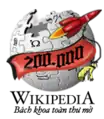 200 000 articles on Vietnamese Wikipedia (2011)
200 000 articles on Vietnamese Wikipedia (2011) 200 000 articles on Arabic Wikipedia (2012)
200 000 articles on Arabic Wikipedia (2012).png.webp) 250 000 articles on Vietnamese Wikipedia (2012)
250 000 articles on Vietnamese Wikipedia (2012) 500 000 articles on Vietnamese Wikipedia (2012)
500 000 articles on Vietnamese Wikipedia (2012) 1 million articles on Russian Wikipedia (2013)
1 million articles on Russian Wikipedia (2013) 750 000 articles on Vietnamese Wikipedia (2013)
750 000 articles on Vietnamese Wikipedia (2013) 1 million articles on Vietnamese Wikipedia (2013)
1 million articles on Vietnamese Wikipedia (2013)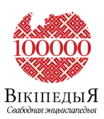 100 000 articles on Belarusian Wikipedia (2015)
100 000 articles on Belarusian Wikipedia (2015) 400 000 articles on Arabic Wikipedia (2015)
400 000 articles on Arabic Wikipedia (2015) 200 000 articles on Armenian Wikipedia (2016)
200 000 articles on Armenian Wikipedia (2016) 2 millions articles on French Wikipedia (2016)
2 millions articles on French Wikipedia (2016)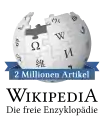 2 millions articles on German Wikipedia (2016)
2 millions articles on German Wikipedia (2016) 5 000 articles on Kashubian Wikipedia (2016)
5 000 articles on Kashubian Wikipedia (2016)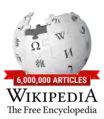 6 million articles on English Wikipedia (2020)
6 million articles on English Wikipedia (2020) 200 000 articles on Belarusian Wikipedia (2020)
200 000 articles on Belarusian Wikipedia (2020) 1 250 000 articles on Vietnamese Wikipedia (2020)
1 250 000 articles on Vietnamese Wikipedia (2020)
Events
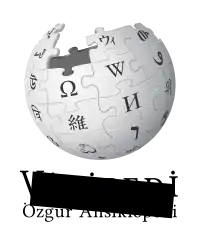 Turkish Wikipedia logo after being blocked in Turkey (2017)
Turkish Wikipedia logo after being blocked in Turkey (2017) The protest on Spanish Wikipedia against Directive on Copyright in the Digital Single Market (2018)
The protest on Spanish Wikipedia against Directive on Copyright in the Digital Single Market (2018) Turkish Wikipedia logo after end of its blockade in Turkey. Text says: "We missed you" (2019)
Turkish Wikipedia logo after end of its blockade in Turkey. Text says: "We missed you" (2019)
Holidays
 New Year at Russian Wikipedia (2006–2007, 2007–2008, 2008–2009, 2009–2010, 2011–2012, 2012–2013)
New Year at Russian Wikipedia (2006–2007, 2007–2008, 2008–2009, 2009–2010, 2011–2012, 2012–2013)_%D0%92%D0%B8%D0%BA%D0%B8%D0%BF%D0%B5%D0%B4%D0%B8%D0%B8_%D0%BD%D0%B0_%D0%9D%D0%BE%D0%B2%D1%8B%D0%B9_%D0%93%D0%BE%D0%B4.png.webp) New Year at Russian Wikipedia (2013–2014)
New Year at Russian Wikipedia (2013–2014) New Year at Russian Wikipedia (2014–2015, 2015–2016)
New Year at Russian Wikipedia (2014–2015, 2015–2016) New Year at Russian Wikipedia (2016–2017)
New Year at Russian Wikipedia (2016–2017) New Year at Russian Wikipedia (2018)
New Year at Russian Wikipedia (2018) New Year at Armenian Wikipedia (2018–2019)
New Year at Armenian Wikipedia (2018–2019) New Year at Russian Wikipedia (2018–2019)
New Year at Russian Wikipedia (2018–2019) New Year at Russian Wikipedia (2019–2020)
New Year at Russian Wikipedia (2019–2020) New Year at Armenian Wikipedia (2019–2020)
New Year at Armenian Wikipedia (2019–2020) New Year at Russian Wikipedia (2020–2021)
New Year at Russian Wikipedia (2020–2021) Day of Remembrance of the Heroes of Artsakh on Armenian Wikipedia (2020)
Day of Remembrance of the Heroes of Artsakh on Armenian Wikipedia (2020)
See also
- Content guideline: using logos on Wikipedia
References
- Poll, Philipp H. "New Wikipedia-Logo using LinuxLibertine". Libertine Open Fonts Project. Archived from the original on 2010-06-30. Retrieved 2018-08-09.
- Oma L Gallaga (May 23, 2010), New Globe, User Interface For Wikipedia, NPR, archived from the original on April 19, 2015, retrieved January 6, 2019
- "What characters are on the Wikipedia puzzle globe?". Archived from the original on 2018-02-21. Retrieved 2017-09-18.
- see 維基大典
- Ayers, Phoebe; Matthews, Charles; Ayers, Ben (2008). How Wikipedia Works: And how You Can be a Part of it. No Starch Press. p. 47. ISBN 9781593271763. Archived from the original on 2021-01-15. Retrieved 2020-11-22.
- Cohen, Noam (June 25, 2007). "Some Errors Defy Fixes: A Typo in Wikipedia's Logo Fractures the Sanskrit". The New York Times. Archived from the original on September 5, 2017. Retrieved February 23, 2017.
- "This Logo Is a Work in Progress Archived 2017-09-05 at the Wayback Machine." The New York Times. June 24, 2007. Retrieved on July 11, 2011.
- It was torn down after the event. See this Category of Commons images for a sense of its size.
- ""brand new" about new logo". Archived from the original on 2013-05-24. Retrieved 2010-11-12.
- "Wikimedia blog – Wikipedia in 3d". Archived from the original on 2013-05-24. Retrieved 2010-11-12.
- The work was done by the Because We Can Archived 2012-08-31 at the Wayback Machine studio, based on the new digital 3D model.
- "Wikimedia Logos Have Been Freed! « Wikimedia blog". Archived from the original on 2017-04-24. Retrieved 2015-04-30.
- "World's largest Wikipedia logo now sits on bottom of Lake Sevan". Archived from the original on 2017-10-04. Retrieved 2017-10-03.
- "Case details for Community Trade Mark E6671838". ipo.gov.uk. UK Intellectual Property Office. January 20, 2009. Archived from the original on January 15, 2021. Retrieved December 18, 2013.
External links
- Wikimedia Blog: Wikipedia in 3D – 3D version of the Wikipedia logo unveiled; description of the new puzzle globe logo
- Wikimedia Blog: A new look for Wikipedia
- Wikipedia:Wikipedia logos